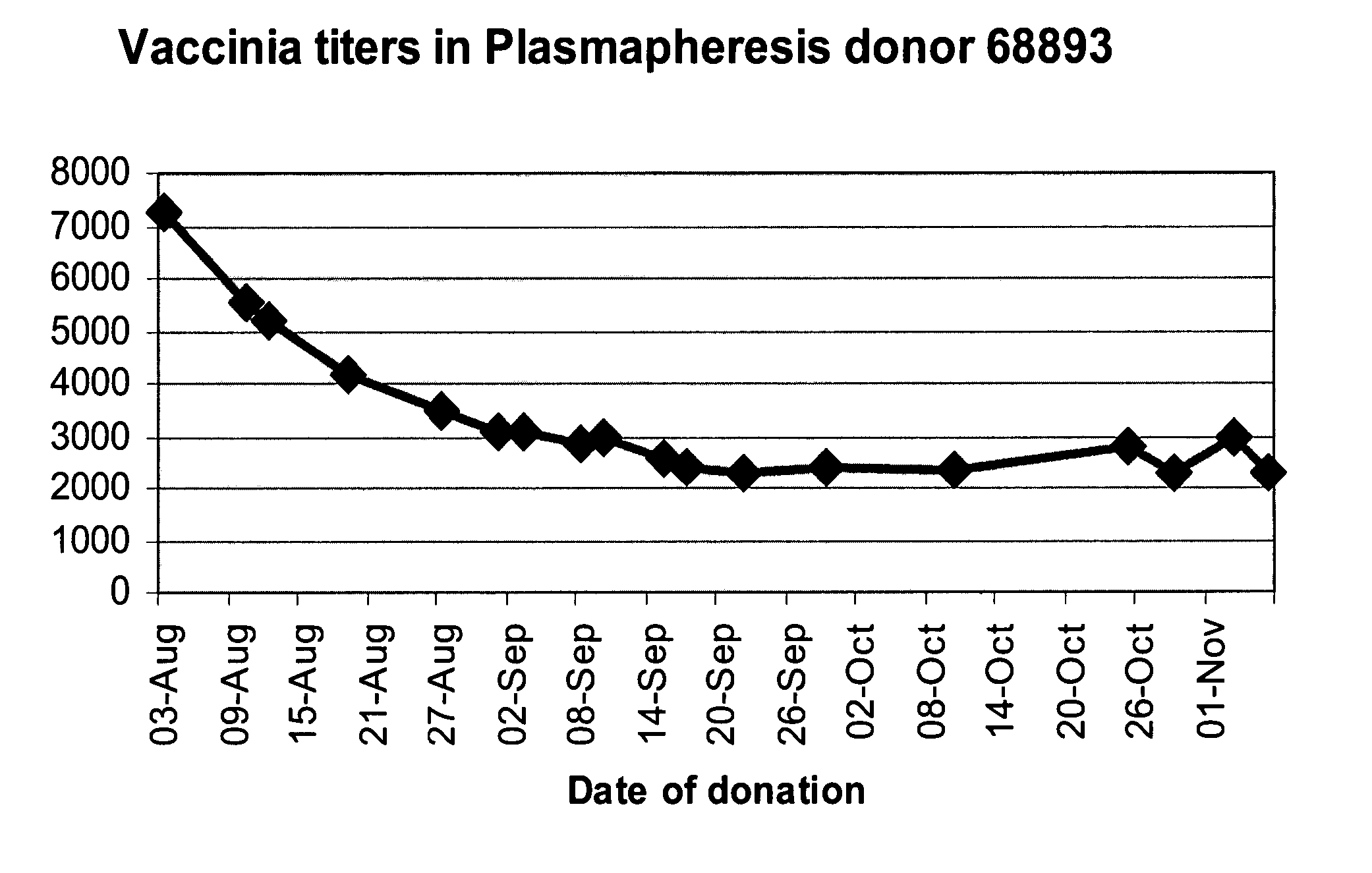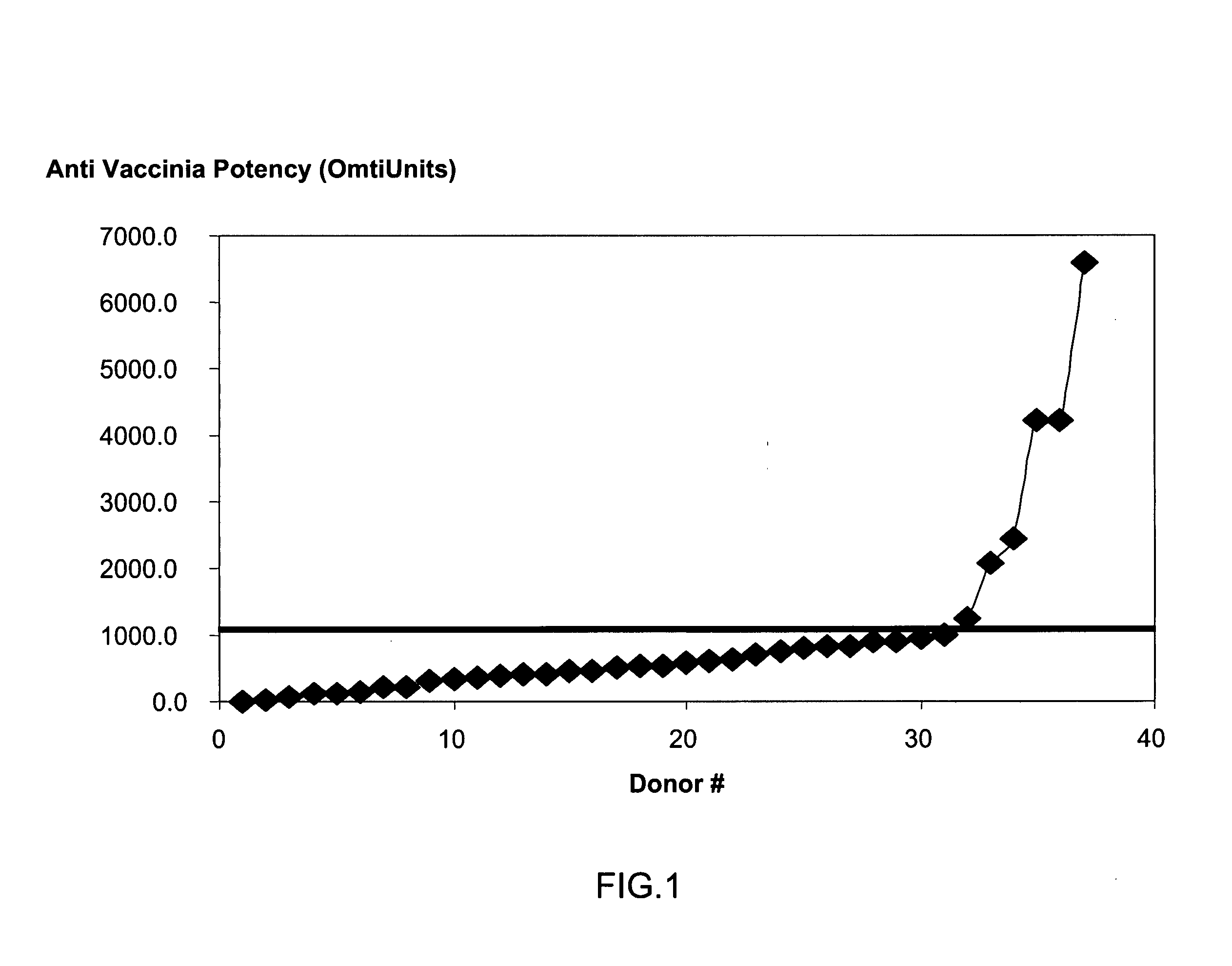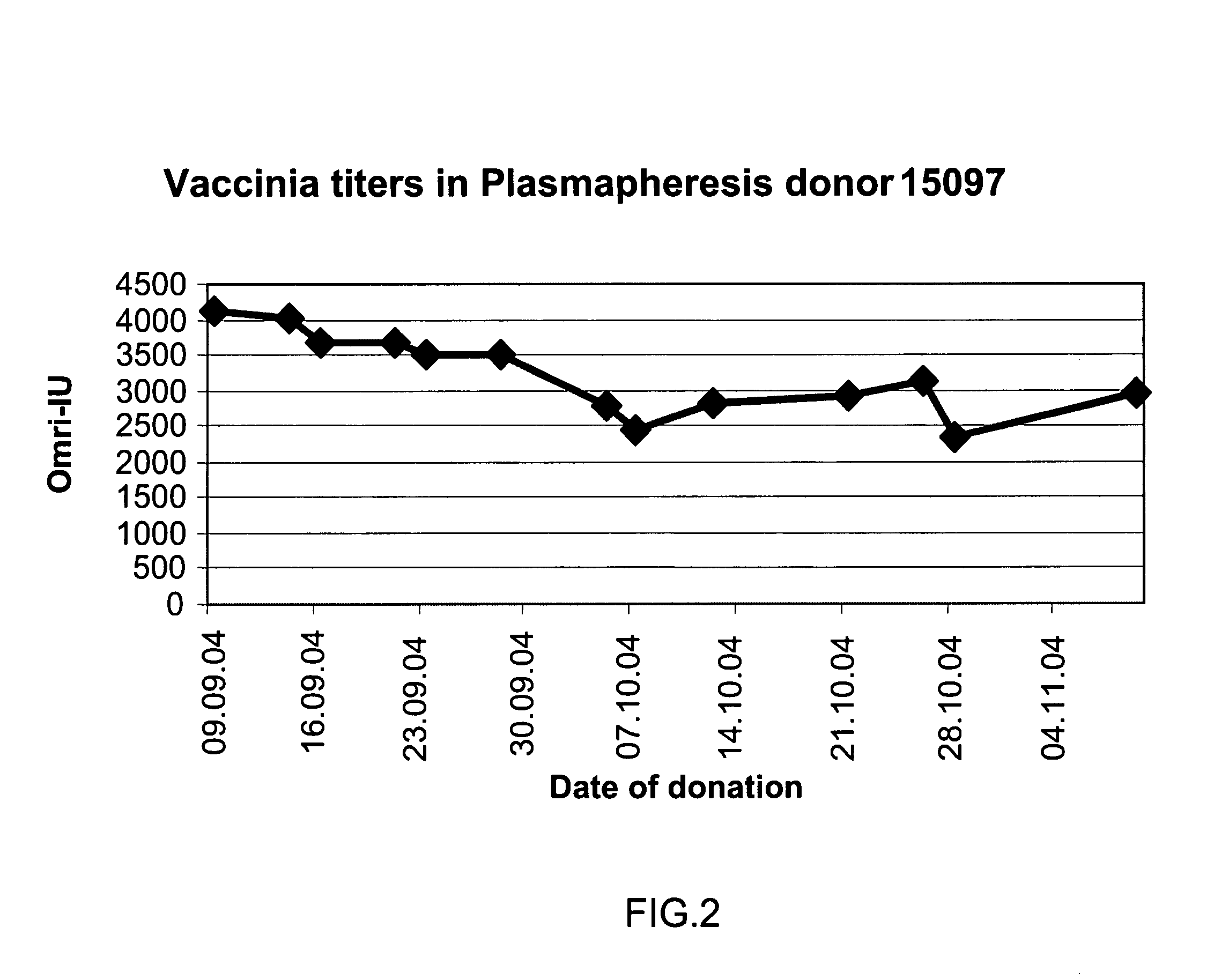Intravenous immunoglobulin composition
- Summary
- Abstract
- Description
- Claims
- Application Information
AI Technical Summary
Benefits of technology
Problems solved by technology
Method used
Image
Examples
example 1
Screening of Anti Vaccinia Titers in Plasma Units Donated by Revaccinated Subjects
[0234] Background: Plasma donations for the production of Vaccinia-rich intravenous immunoglobulin were collected from revaccinated donors during the Israeli emergency program, in which selected military and health services personnel were vaccinated against Smallpox. Since donor selection was based exclusively on clinical manifestation signs and not on sero-conversion immunoglobulin titers, an assessment was needed to evaluate the titers in plasma manufacturing pools.
[0235] Methods: 37 plasma donations were selected randomly out of 24,000 subjects who were inoculated intradermally 30 days previously with 20 μl of the Elstree Vaccinia virus (mean titer, 107 pfu per milliliter). The plasma units were monitored for the titers of anti-Vaccinia immunoglobulin using an ELISA assay. 3 ml of each of the plasma donations were mixed with the other samples and the pool served as a positive standard. The pooled ...
example 2
Correlation Between Clinical Responses and Sero-Conversion of Smallpox Vaccination of Revaccinated Adults
[0239] Background: The production of Vaccinia Immune Globulin (VIG) relies on the collection of plasma from recently vaccinated adult subjects. Recent reports indicated that the clinical response of naive subjects exceeded 95%, while reports from the early 1960s showed that the clinical response in revaccinated children is much lower. A clinical experiment was designed to evaluate the response percentage and to assess the correlation between the revaccinated subjects' clinical response and the increase in anti-Vaccinia titers.
[0240] Method: In this randomized, single-blind, prospective study, 157 adults who had been previously immunized, were inoculated intradermally with 20 μl of the Elstree Vaccinia virus (mean titer, 107 pfu per milliliter), using a hypodermic needle, and the site was covered with a semi permeable dressing. Subjects were monitored for vesicle formation on da...
PUM
| Property | Measurement | Unit |
|---|---|---|
| Fraction | aaaaa | aaaaa |
| Temperature | aaaaa | aaaaa |
| Volume | aaaaa | aaaaa |
Abstract
Description
Claims
Application Information
 Login to View More
Login to View More - R&D
- Intellectual Property
- Life Sciences
- Materials
- Tech Scout
- Unparalleled Data Quality
- Higher Quality Content
- 60% Fewer Hallucinations
Browse by: Latest US Patents, China's latest patents, Technical Efficacy Thesaurus, Application Domain, Technology Topic, Popular Technical Reports.
© 2025 PatSnap. All rights reserved.Legal|Privacy policy|Modern Slavery Act Transparency Statement|Sitemap|About US| Contact US: help@patsnap.com



